Introduction: ZZ plants, also known as Zamioculcas zamiifolia, are awesome indoor plants that have become quite popular. They’re known for their shiny, dark green leaves and their ability to thrive in low-light conditions. Plus, they’re super low-maintenance, making them perfect for busy plant lovers or beginners. Did you know that soil is alive with tiny microorganism? Do you know How ZZ Plant Care? And leaves, oh, they provide nourishment and shelter for those little soil dweller. Want to know more about these cool plants? Just let me know!
Some Take care tips of ZZ PLANTS:
Let’s dive into some ZZ Plant Care tips :
1. Watering: ZZ plants like to have their soil dry out between waterings. It’s best to water them thoroughly and then allow the top inch or so of soil to dry before watering again. Overwatering can lead to root rot, so be sure not to let them sit in waterlogged soil.
2. Lighting: ZZ plants can tolerate a wide range of lighting conditions. They can survive in low light areas, but they’ll do even better in bright, indirect light. Avoid direct sunlight because it can scorch the leaves of zz plants. Finding a spot near a window with filtered light is ideal and takecare of ZZ Plant Care.
3. Temperature and Humidity: ZZ plants are quite adaptable when it comes to temperature. They can handle a range of temperatures, but they prefer temperatures between 65-75°F (18-24°C). They also do well in average household humidity levels, so no need for extra humidity.
4. Soil and Fertilizer: ZZ plants thrive in well-draining soil. A good potting mix with perlite or sand mixed in works well. As for fertilizer, you can use a balanced houseplant fertilizer once a month during the growing season (spring and summer), but be sure to dilute it to half strength.
5. Pruning: ZZ plants have a slow growth rate, but you can still trim off any yellowing or damaged leaves using clean, sharp scissors. This helps keep the plant looking tidy and encourages new growth.
Basic care information of ZZ Plants:
Botanical Name: The botanical name for ZZ plants is Zamioculcas zamiifolia. It’s a bit of a tongue twister, but it’s always fun to know the scientific name too!
Common Name: ZZ plant is also known by a few other common names. Some people refer to it as the Zanzibar gem or the eternity plant. So, if you hear someone talking about the Zanzibar gem or eternity plant, they’re actually referring to the ZZ plant.
Origin: ZZ plant is native to eastern Africa, specifically the regions of Zanzibar, Kenya, and Tanzania. It was first discovered in the late 19th century and has since become a popular houseplant worldwide. It’s pretty cool to think about how plants can travel and become loved by people all over the world, right?
ZZ PLANTS VARITIES:
There are a few different types of ZZ plants that you might come across:
1. Zamioculcas zamiifolia: This is the most common type of ZZ plant that you’ll find. It has glossy, dark green leaves that grow in a pinnate pattern, meaning they have multiple leaflets along a central stem.
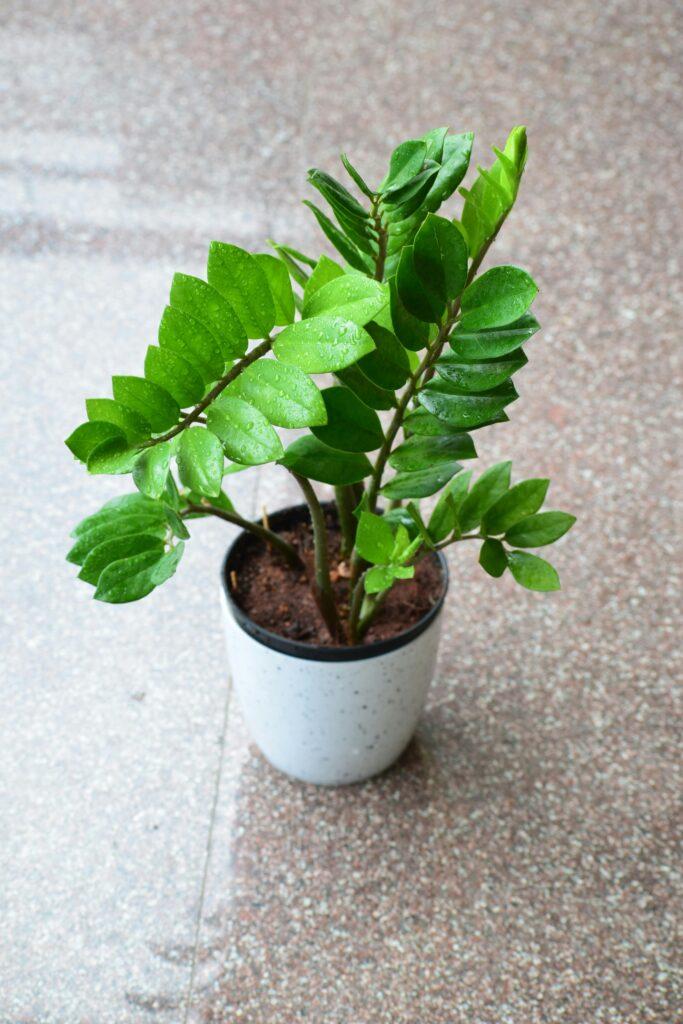
2. Zamioculcas zamiifolia ‘Raven’: This variety has striking black leaves, giving it a unique and dramatic appearance. It’s a popular choice for adding a touch of darkness to your plant collection.
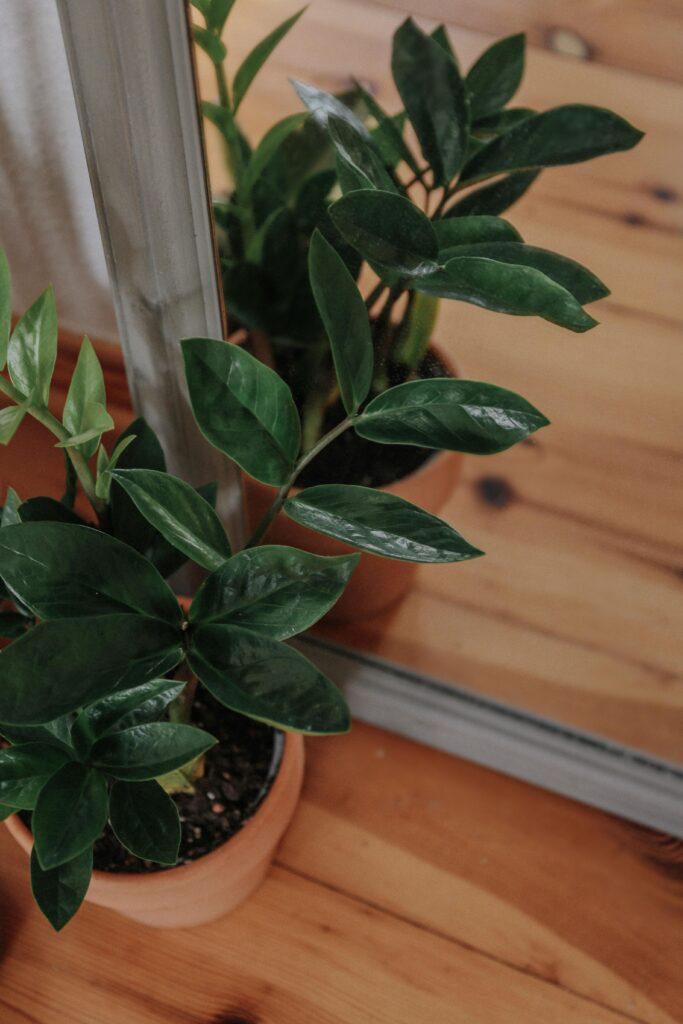
3. Zamioculcas zamiifolia ‘Zenzi’: This dwarf variety of ZZ plant has smaller leaves and a more compact growth habit. They need profer Care of ZZ Plant.
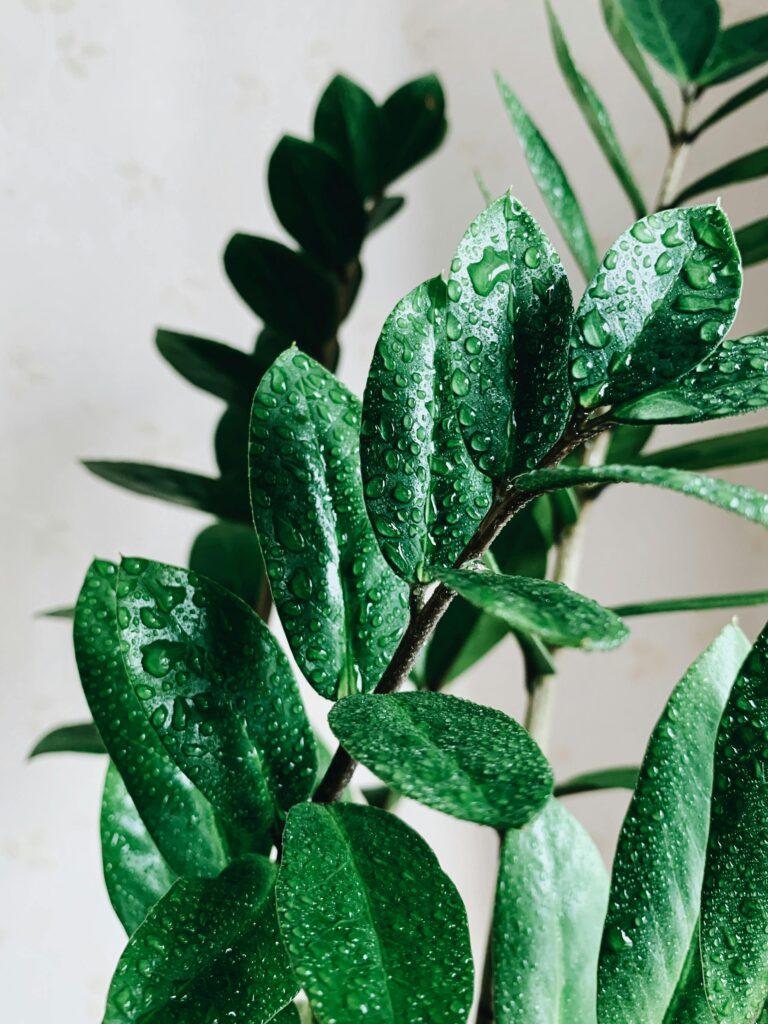
Growth of ZZ Plants: ZZ plants are known for their slow to moderate growth rate. They are not the fastest growers, but they can still thrive and gradually increase in size with proper takecare ZZ Plant . It’s important to be patient and allow them to grow at their own pace. So, don’t expect rapid growth, but enjoy watching your ZZ plant slowly flourish over time!
Height of ZZ Plants: ZZ plants can grow to be around 2 to 3 feet tall on average. However, with the right conditions and care, they can sometimes reach heights of up to 4 feet or more. It’s important to note that the height of a ZZ plant can be influenced by factors such as lighting, temperature, and overall care. So, make sure to provide your ZZ plant with a suitable environment to help it reach its full potential.
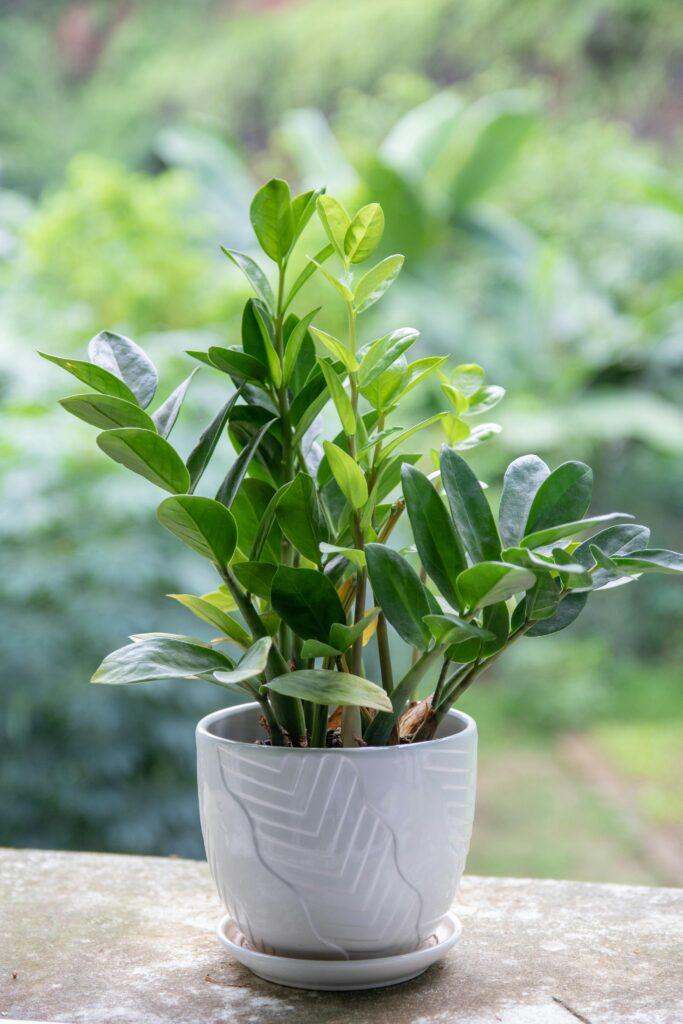
Foliage of ZZ Plants: The foliage of ZZ plants is one of their standout features! The leaves are thick, waxy, and glossy, giving them a unique and attractive appearance. The individual leaflets are oval-shaped and grow in a pinnate pattern, meaning they branch out from a central stem. The colour of the leaves is a deep, dark green, which adds to their overall beauty. The foliage of ZZ plants is not only visually appealing but also helps them to tolerate low light conditions and periods of drought. It’s definitely one of the reasons why people love having ZZ plants as houseplants!
Flower of ZZ Plants: ZZ plants actually don’t produce noticeable flowers very often. They are primarily grown for their lush foliage rather than their blooms. However, on rare occasions, mature ZZ plants may produce small, spadix-like flowers that are typically hidden within the foliage. So, while ZZ plants are known for their beautiful foliage, their flowers are not a significant feature.
Special attributes: ZZ plants have a few special attributes that make them popular houseplants:
1. Tolerance to low light: Care of ZZ plants can thrive in low light conditions, making them perfect for areas of your home that don’t receive much natural sunlight. They can tolerate fluorescent lighting or even a bit of shade.
2. Drought tolerance: ZZ plants have evolved to survive in dry environments, so they can handle periods of neglect or infrequent watering. They store water in their rhizomes, which are underground stems, allowing them to go longer between waterings.
3. Air-purifying qualities: Like many other houseplants, ZZ plants can help improve indoor air quality by filtering out toxins and releasing oxygen. Having a ZZ plant in your space can contribute to a healthier and more refreshing environment.
4. Easy care: Care of ZZ plants are known for being low-maintenance and relatively forgiving. They don’t require frequent repotting and can withstand some neglect. Just make sure not to overwater them, as they prefer slightly drier conditions.
These special attributes make ZZ plants a popular choice for both beginner and experienced plant enthusiasts. They’re beautiful, resilient, and can add a touch of green to any space!
Toxicity: ZZ plants are considered to be mildly toxic to humans and pets. The leaves and stems contain calcium oxalate crystals, which can cause irritation if ingested or if the sap comes into contact with the skin. It’s always a good idea to keep ZZ plants out of reach of children and pets, and to wash your hands after handling them. While ZZ plants are generally not a major concern, it’s better to be cautious when it comes to their toxicity.
ZZ Plants Propagation:
Propagating ZZ plants can be done through stem cuttings. Here’s a simple guide:
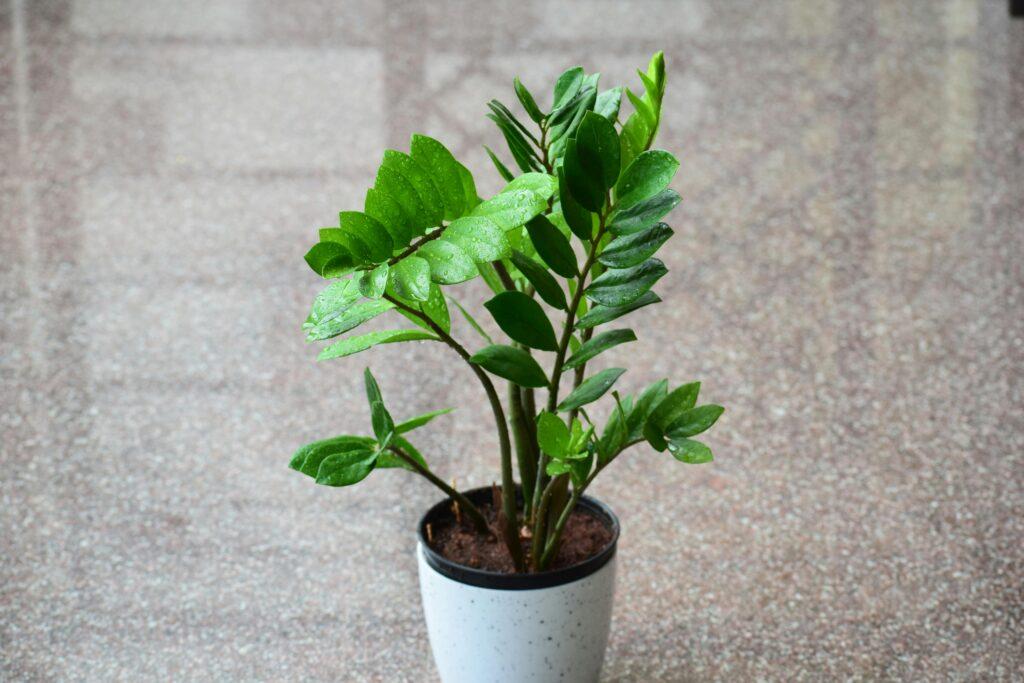
1. Select a healthy stem: Look for a stem that is at least 6 inches long and has a few leaves attached.
2. Prepare the cutting: Using clean, sharp scissors or a knife, make a clean cut just below a leaf node (where a leaf is attached to the stem). Removing the leaves from the lower part of the cutting will definitely help promote better growth. It allows more energy and nutrients to be directed towards root development.
3. Let it callus: Place the cutting in a warm, dry location for about a week to allow the cut end to callus over. This helps that when it is sown, it does not itch.
4. Plant the cutting: Fill a small pot with well-draining soil or a mixture of perlite and peat moss. Make a hole in the soil and insert the cutting, burying the node where the leaves were removed. Press the soil gently around the edges of the cut to keep it secure.
5. Provide the right conditions: Place the pot in a warm and bright location, but avoid direct sunlight. Keep the soil moist, but be careful not to make it too wet.
6. Be patient: It may take several weeks or even a few months for roots to develop. Once you see new growth, it’s a sign that the cutting has successfully rooted.

